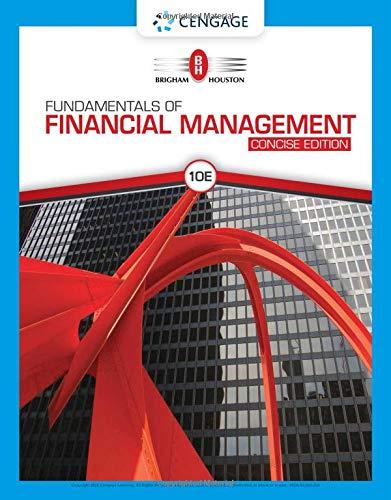

Two depository institutions have composite CAMELS ratings of 1 or 2 and are "well capitalized." Thus, each institution falls into the FDIC Risk Category 1 deposit insurance assessment scheme. Further, the institutions have the following financial ratios and CAMELS ratings: Use Table 13-11. Tier I leverage ratio (8) Net income before taxes/risk-weighted assets (8) Nonperforming loans and leases/gross assets (8) Other real estate owned/gross assets (8) Brokered deposits/total assets (8) One year asset growth Institution A 8.71 2.24 0.44 0.85 2.40 6.95 Institution B 7.84 2.00 0.59 0.90 2.40 6.00 Loans as a Percentage of Total Assets: Construction & Development Commercial & Industrial Leases Other Consumer Loans to Foreign Government Real Estate Loans Residual Multifamily Residential Nonfarm Nonresidential 1-4 Family Residential Loans to Depository Banks Agricultural Real Estate Agricultural 0.00 14.76 1.60 18.40 0.45 0.00 0.95 0.00 38.94 1.35 2.30 3.80 0.00 13.55 0.60 18.10 0.15 0.00 0.80 0.00 35.49 1.45 4.50 3.60 CAMELS components: 1 A M E L S 2 2 2 1 1 1 The DIF reserve ratio is currently 1.30 percent. Calculate the initial deposit insurance assessment rate for each institution. (Do not round intermediate calculations. Round your answers to 2 decimal places. (e.g., 32.161)) Institution A Institution B Initial assessment rate TABLE 1311 CAMELS Component Weights CAMELS Component Weight 25% A 20 M 25 E 10 L 10 S 10 Two depository institutions have composite CAMELS ratings of 1 or 2 and are "well capitalized." Thus, each institution falls into the FDIC Risk Category 1 deposit insurance assessment scheme. Further, the institutions have the following financial ratios and CAMELS ratings: Use Table 13-11. Tier I leverage ratio (8) Net income before taxes/risk-weighted assets (8) Nonperforming loans and leases/gross assets (8) Other real estate owned/gross assets (8) Brokered deposits/total assets (8) One year asset growth Institution A 8.71 2.24 0.44 0.85 2.40 6.95 Institution B 7.84 2.00 0.59 0.90 2.40 6.00 Loans as a Percentage of Total Assets: Construction & Development Commercial & Industrial Leases Other Consumer Loans to Foreign Government Real Estate Loans Residual Multifamily Residential Nonfarm Nonresidential 1-4 Family Residential Loans to Depository Banks Agricultural Real Estate Agricultural 0.00 14.76 1.60 18.40 0.45 0.00 0.95 0.00 38.94 1.35 2.30 3.80 0.00 13.55 0.60 18.10 0.15 0.00 0.80 0.00 35.49 1.45 4.50 3.60 CAMELS components: 1 A M E L S 2 2 2 1 1 1 The DIF reserve ratio is currently 1.30 percent. Calculate the initial deposit insurance assessment rate for each institution. (Do not round intermediate calculations. Round your answers to 2 decimal places. (e.g., 32.161)) Institution A Institution B Initial assessment rate TABLE 1311 CAMELS Component Weights CAMELS Component Weight 25% A 20 M 25 E 10 L 10 S 10








